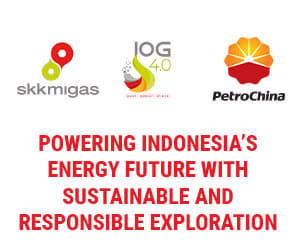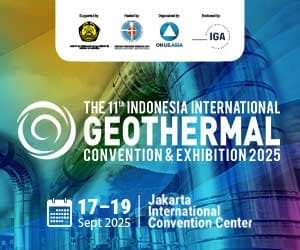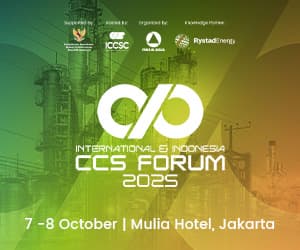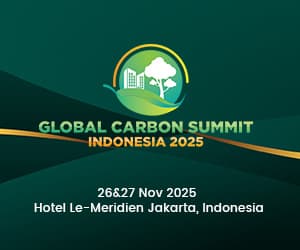By Nova Farida
In this comprehensive interview with Petromindo.com, Hartono Setiawan, General Manager for Sales & Marketing at Mitsubishi Power Indonesia, elaborates on the company's pivotal role in advancing Indonesia's energy sector towards sustainability. Highlighting collaborations with PLN Group for exploring clean energy solutions like co-firing, hydrogen, ammonia, and biomass in power generation, Hartono delves into the progress of these initiatives and their impact on Indonesia's energy landscape. He discusses Mitsubishi Power's contributions across significant projects in Indonesia and outlines the company's ongoing efforts in technological innovation and clean energy transition.
Hartono's insights shed light on Mitsubishi Power's long-term commitment to Indonesia's energy goals, underscoring the importance of partnerships, innovation, and a strategic approach to achieving a sustainable and low-carbon future.
Below are excerpts of the interview.
1. Recently, Mitsubishi Power collaborated with PLN Group to conduct a joint study regarding the use of co-firing, hydrogen, ammonia and biomass in power plants. Can you mention at which plants the study was carried out? What is the progress like so far?
We have collaborated with PT. PLN’s (Persero) sub-holdings PT. PLN Nusantara Power and PT. PLN Indonesia Power on joint studies to advance co-firing technologies, supporting our common goals of providing cleaner, more stable and affordable power for the nation.
Last year at the Asia Zero Emission Community (AZEC) Public-Private Investment Forum, we signed a Memorandum of Understanding (MoU) to commence three technical studies related to co-firing of hydrogen, ammonia and biomass at power plants owned and operated by PT. PLN Nusantara Power1. Two of which are conducted at the Muara Karang Power Plant – the first to examine the potential for introducing hydrogen co-firing for an M701F Series turbine, and the other to explore the feasibility of ammonia co-firing in a gas-fired boiler. The third study is conducted at the Paiton Coal-Fired Power Plant to evaluate the technical aspects for the feasibility of biomass co-firing.
Separately, in 2022, we commenced a partnership with PT. PLN Indonesia Power on three feasibility studies on co-firing less carbon intensive fuels at power plants owned and operated by Indonesia Power2. The first study evaluates the technical and economic feasibility of hydrogen co-firing in an M701F gas turbine at the Tanjung Priok gas turbine combined cycle facility. And a pair of studies used Suralaya CFPP as the reference plant to investigate co-firing of 100% biomass and ammonia.
We are actively advancing in these studies, and completed our joint study with PT. PLN Indonesia Power on hydrogen co-firing modification of an existing M701F gas turbine in Tanjung Priok CCPP in August 2023. Preliminary findings demonstrate the technical feasibility and upcoming commercial viability of retrofitting existing natural gas-fired turbines to become hydrogen-ready gas turbines.
Concurrently, we are exploring innovative methods for ammonia cracking alongside advanced combustion technologies with Insititut Teknologi Bandung (ITB). Our collaboration with the highly esteemed university has completed its first year joint research and is currently progressing into the second year. Updates will be shared as there are notable developments and updates on these projects.
2. It is known that Mitsubishi Power has a large role in several power generation projects in Indonesia such as Muara Karang, Tanjung Priok, Jawa 2 and so on. Are there any new projects underway, collaboration with the PLN Group or private electricity companies? Be it as technology suppliers and EPCC.
We are continually committed to supporting Indonesia’s National Energy Plans and overall goal of achieving net-zero by 2060. Ongoing conversations and exploration of new opportunities to collaborate with local utilities and power producers to advance reliable, sustainable and efficient energy solutions is always on the agenda.
We are proud to have installed our M701F gas turbines at the Muara Karang Power Plant (2011), Tanjung Priok Power Plant (2012) and the Jawa-2 Project (2018), contributing to the enhanced efficiency of gas-fired power plants across the nation. Concurrently, as shared earlier, Mitsubishi Power is actively engaged in partnerships with local partners such as PLN, Indonesia Power and ITB, to explore the co-firing potential of cleaner fuels like hydrogen, ammonia and biomass in Indonesia.
As a world leader in developing power generation technologies, we are constantly innovating and are moving quickly on innovation. Last year, we successfully executed a 30% hydrogen-natural gas co-firing demonstration using a grid-connected J-series Air Cooled (JAC) gas turbine at the Takasago Hydrogen Park. We are increasing the co-firing ratios towards our goal of commercializing 100% hydrogen in or around 2030.
The next decade is an exciting period. We look forward to unlocking novel opportunities for cleaner energy solutions in Indonesia and the region.
3. What is Mitsubishi Power’s role in the Lumut Balai Unit 2 Geothermal Power Plant project in Muara Enim, South Sumatra? How far has the development progress gone? If I’m not mistaken, the target is to have it completed by the end of this year.
Mitsubishi Power oversees the design of the geothermal power generation facilities of the Lumut Balai Unit 2 project, and will supply the steam turbine, generator and other main accessory equipment, under supply contract with Consortium of Mitsubishi Corporation and SEPCO-III
Beyond design and supply, our engineers have been actively engaged, providing on-site guidance for installation and trial operation3. Leveraging our deep technical expertise and decades of experience as an EPC contractor, we aim to ensure the smooth construction and subsequent operation of the power plant.
As for the project’s progress, PT Pertamina Geothermal Energy (PGEO) has broken ground on the construction of the power plant in December last year, we are advancing this project and will provide additional updates as they become available.
4. Looking at the results of the hydrogen fuel co-firing trial carried out at Takasago Hydrogen Park, Japan, will this also be implemented in Indonesia? To what extent has this program been discussed with Indonesia’s government and electricity stakeholders?
Takasago Hydrogen Park is the world’s first integrated validation facility for technologies from hydrogen production to power generation. The facility is connected to the local grid, just like a real power plant, allowing the identification of potential risks and addressing them in a timely manner.
In September last year, we successfully completed the permanent installation and began operations of an alkaline electrolyzer in the facility. The electrolyzer holds the world's highest hydrogen production capacity at 1,100 Nm3/h. We are also developing production technologies, including solid oxide electrolysis cells (SOEC), anion exchange membrane (AEM) water electrolyzers, and next-generation turquoise-hydrogen production technology.
In November 2023, we successfully executed a 30% hydrogen-natural gas co-firing demonstration at the facility, which verified low nitrogen oxide (NOx) emissions and stable combustion during the process. It also demonstrated that switching fuels from natural gas to hydrogen fuel blending is possible during partial-load and full-load operation. We now have our sights set on validating 100% hydrogen firing in our H-25 gas turbine, and performing a demonstration using a 50% hydrogen blended fuel on the JAC gas turbine this year.
Our investments and demonstrations at the facility demonstrate that hydrogen power generation is upon us; and relevant technologies are progressing rapidly. Learnings from the facility is applied across all our collaboration, projects and feasibility studies in Indonesia, supporting our local partners and customers achieve their goals and stay ahead of a fast-changing landscape.
5. In growing the electricity business in Indonesia, how much has Mitsubishi Power contributed to the Indonesian electricity industry?
Mitsubishi Power has a robust and enduring partnership with Indonesia, spanning over 50 years since our first steam turbine was shipped to the nation in 1971.
During this period, the cumulative power generation capacity of our systems has increased to approximately 18 GW of power, constituting around 25% of Indonesia’s total installed capacity. In 2016, Mitsubishi Power received an EPC contract for the expansion of the Muara Karang GTCC power plant – resulting in one of the most advanced, efficient and low carbon thermal power plant in Indonesia with over 60% efficiency upon commissioning4. As of June 2019, Mitsubishi Power holds the largest market share for large gas turbines in Indonesia, including GTCC power generation systems5.
Geothermal is another focus area for Mitsubishi Power in Indonesia. Collaborating with local partners like PT Pertamina Geothermal Energy and Indonesia Power, we help to supply clean electric power with our technologies in geothermal power plants such as Darajat and Kamojang. As an EPC services provider, our strength in the optimization and integration of power plants ensures the maximum output from geothermal energy in different regions in Indonesia, increasing power generation capacity to meet the country’s power needs.
Beyond the provision of equipment, our engineers are equipped with decades of experience to optimize power plant operations and maintenance. With our first subsidiary company in Indonesia established in 1994, our team of professionals has consistently provided quality short- and long-term comprehensive service and maintenance plans to ensure smooth operations for our customers. We continue to collaborate closely with our local partners to advance innovative clean energy solutions towards decarbonizing power generation in the country.
6. What technologies does Mitsubishi Power offer when it comes to the clean energy transition program in Indonesia?
Every country has unique characteristics and will forge its own energy transition journey. Mitsubishi Power offers a suite of innovative power generation technologies that enable Indonesia to build viable roadmaps toward a sustainable energy future.
More than 60 per cent of Indonesia’s energy comes from coal. Hence, its priority is to increase efficiency of its existing coal power plants, while transitioning to gas and renewables such as biomass and geothermal and ramping up usage of zero-carbon fuels such as hydrogen and ammonia.
As a first step away from coal, Indonesia can look into transitioning to natural gas power plants. As a full EPC provider, Mitsubishi Power offers a one-stop solution to convert existing coal or oil-fired power plants to natural gas fired power plant – reducing carbon emissions by 65%.
Subsequently, natural gas is also a stepping stone to adoption of cleaner fuels, such as biomass, ammonia and hydrogen, through co-firing. Mitsubishi Power has the expertise and co-firing technologies to decarbonize their existing GTCC power plants with minimal modifications. This provides a realistic solution for power plant owners, allowing them to undertake a gradual and phased approach by transitioning to co-firing lower carbon fuels like biomass, ammonia and hydrogen. Our advanced-class JAC gas turbines hold the world's highest efficiency exceeding 64% and reliability at 99.5% to enhance the affordability and stability of existing natural gas power plants. It can also co-fire up to 30% hydrogen, offering flexibility for hydrogen-based power generation. The transition from LNG to 30% hydrogen reduces carbon emissions further by 10%.
Beyond lowering the emissions of existing power plants, the co-firing of low carbon fuels also maintains the services and flexibility of the existing power fleet, strategically complementing the introduction of renewables. In the long term, the co-firing technologies paves the way for the eventual transition to exclusive firing of zero-carbon fuels such as hydrogen and ammonia to support the nation’s net zero goals.
Indonesia also has large geothermal energy sources and we are honored to support power plants that leverage this massive potential. We have advanced technologies for geothermal and are first in the world to introduce a combined system with two-phase flow transportation system and double flash cycle for geothermal power generation. We also design, manufacture and construct the plants for maximum output in consideration of the region’s geothermal resources and atmospheric properties.
This variety of approaches should work in parallel. As Indonesia works towards increasing its share of renewable energy to 44% and reach net zero by 2060, we are excited to work together with partners to expand the nation’s capabilities in harnessing low-carbon energy sources and usher in a cleaner energy future.
7. Are there any new innovations currently being developed by Mitsubishi Power? Especially to answer the electricity needs in Indonesia.
Mitsubishi Power understands that there is no silver bullet to obtain a sustainable energy future. As such, we are actively engaged in a range of projects in collaboration with our partners in Indonesia – this span gas turbine combined cycle (GTCC) power plants, co-firing power plants, steam turbines, boilers, geothermal power systems, and air quality control systems (AQCS).
For instance, our partnership with Indonesia’s Bandung Institute of Technology (ITB) to probe zero carbon technologies is ongoing6. We have also partnered with ITB to conduct studies on various emerging energy sources, including hydrogen and ammonia, as well as AQCS and microgrid solutions. Each of these initiatives takes countless hours of behind-the-scenes work, and though change is gradual, it is steady.
An innovation that we are excited to implement in Indonesia is our advanced-class JAC gas turbines, that I mentioned above. The industry leading turbine has an efficiency exceeding 64% and reliability at 99.5% to enhance the affordability, stability and sustainability of existing natural gas power plants in Indonesia. It can also co-fire up to 30% hydrogen, offering flexibility for hydrogen-based power generation. Such nimble energy solutions enable a gradual and stable transition towards Indonesia’s net-zero goals.
Mitsubishi Power is constantly innovating as a power generation solutions provider. We hope to collaborate closely with local energy players to actualize these innovations and move the world toward a more sustainable future.
8. Are there any electricity project tenders that Mitsubishi Power is targeting? What are they?
We are continuously exploring various electricity project opportunities in Indonesia. While we cannot disclose specific details about ongoing tender processes, we remain actively engaged in identifying and pursuing projects aligned with our expertise and commitment to advancing sustainable energy solutions.
9. What is Mitsubishi Power's short and long-term plans or targets regarding electricity projects in Indonesia?
Our short- and long-term plans closely mirrors Indonesia’s energy transition journey. We are ready to offer power generation solutions that meet the needs of communities in the nation and ensure a smooth and just energy transition.
In the near term, Mitsubishi Power aims to support the nation’s transition away from coal and decarbonize existing power generation systems – through introducing our gas turbine combined cycle solutions, AQCS and O&M services to help existing facility meet higher efficiency and environmental performance targets. For instance, we upgraded two GTCC power plants with M701F gas turbines at Senoko Energy in Singapore in 2021. This helped to improve energy efficiency and reduce approximately 15,000 tons of carbon emissions annually, equivalent to removing over 4,500 cars from the road a year7.
Looking ahead, the adoption of low carbon fuels and renewables will be needed to achieve the wider goal of cutting carbon emissions across the board. In addition to ramping geothermal capabilities, co-firing of low-carbon fuels holds significant promise in gradually reducing carbon emissions in the mid- to long-term. Co-firing of cleaner fuels like hydrogen, ammonia and biomass can be achieved through retrofitting existing power plants, facilitating a gradual transition towards low and zero-carbon fuels.
Together with PLN and ITB, we also presented a policy proposal to promote the adoption of biomass co-firing at the country's thermal power plants to the government. We will continue to lend our expertise in biomass co-firing technologies to help select the appropriate biomass fuel components and assess the extent of upgrading that power plants need to undergo.
Through gradual transition, technological advancements and strategic partnerships, hybrid systems hold the promise of transforming the power landscape toward a sustainable future, one step at a time.
10. What are Mitsubishi Power's hopes for the development of the electricity industry in Indonesia?
Mitsubishi Power has been part of Indonesia’s energy landscape for over 50 years, and these decades of experience mean that we are intimately acquainted with local needs. We know the bolstering the nation’s energy sector directly impacts the lives of over 278 million people who call this country home. This is why apart from installing power equipment around Indonesia, we are also conducting joint research with local entities like PLN on the use of lower carbon fuels. These efforts in knowledge sharing are critical to national and energy sector development.
Beyond power generation, we are also helping train Indonesia’s engineers of tomorrow. Since 2020, we have been working with the Institut Teknologi Bandung to provide lectures on topics ranging from big data analysis and biomass energy to hydrogen usage and AQCS development.
As Indonesia forges forward in its energy journey, Mitsubishi Power will continue to support the country’s efforts to evolve its energy sector and create a cleaner future for its citizens.
__________________________________________________________________________
1. https://www.mhi.com/news/23032302.html
2. https://power.mhi.com/news/20221102.html
3. https://www.mhi.com/news/22120501.html
4. https://ap.power.mhi.com/muarakarangcasestudy
5. https://power.mhi.com/case/indonesia
6. https://power.mhi.com/news/231117.html
7. https://power.mhi.com/news/20211202.html












